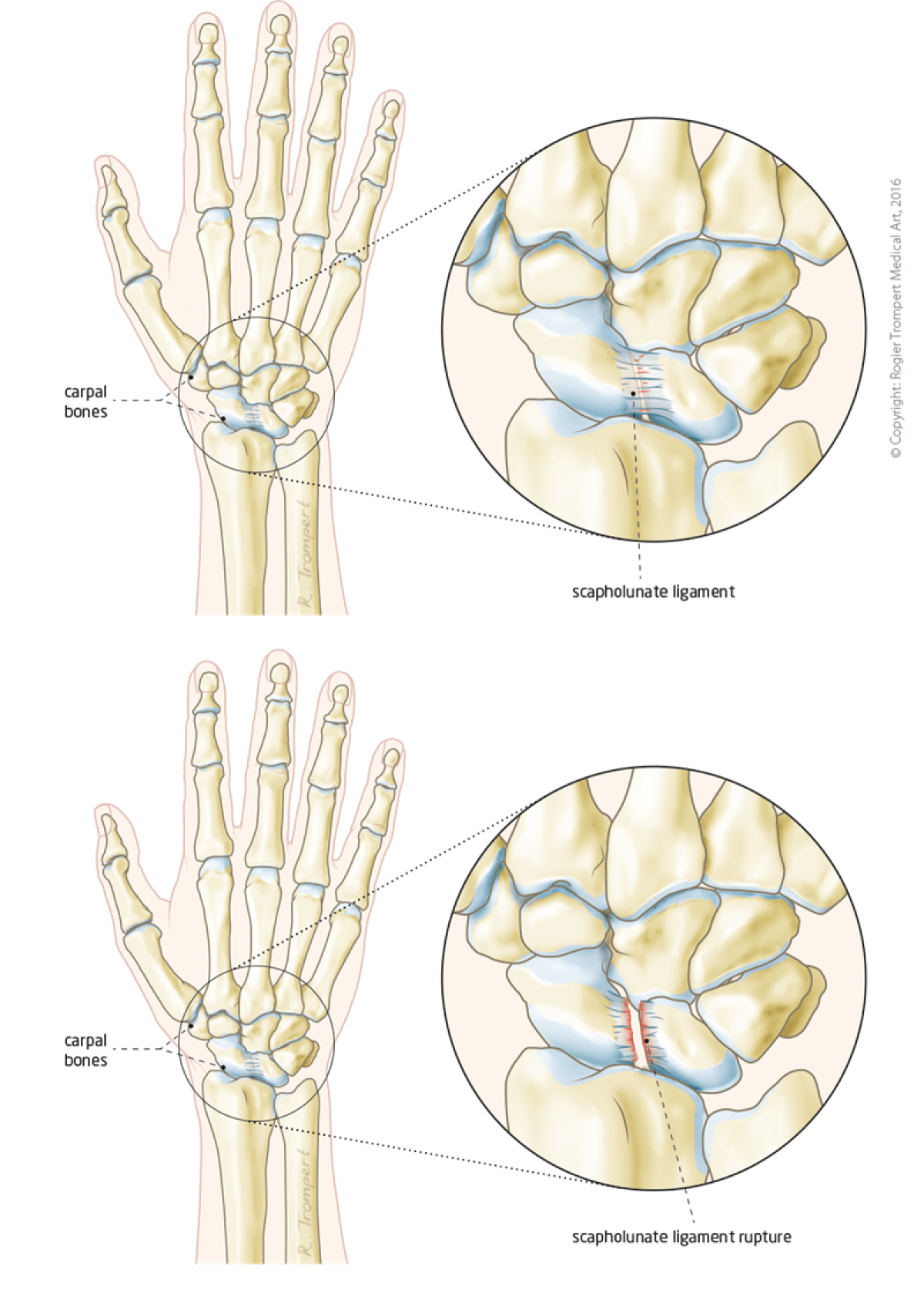What is a scapholunate ligament injury?
The wrist joint is a complex structure that includes eight small carpal bones. Two of these bones are the scaphoid bone and the lunate bone. These bones are held together by a strong ligament called the scapholunate ligament.
Typically, a fall on an outstretched hand can cause the scapholunate ligament to tear, breaking the bond between the scaphoid and lunate bones. This causes instability of the wrist joint, often with pain, reduced power, reduced range of motion and clicking or clunking of the wrist. If the scapholunate ligament injury has been present for a long time, the wrist bones slowly collapse causing a SLAC wrist (Scapholunate Advanced Collapse wrist).

Diagnosis & treatment for scapholunate ligament injuries
History and physical examination by a hand / wrist surgeon are the foundation of the diagnosis, but additional tests will be required. X-rays and a MRI scanare very useful to confirm the diagnosis. The best way to establish the diagnosis of a torn scapholunate ligament is a wrist arthroscopy . During this procedure the surgeon can see inside the wrist using 4 small incisions (+/- 5 mm each) and a fiber-optic camera.
Treatment of scapholunate ligament injury varies depending on the severity and the length of time the injury has been present. In acute cases, the ligament can be repaired with open wrist surgery. In chronic cases the function of the ligament needs to be reconstructed using a tendon graft. In very advanced cases, the treatment is often the same as that of a SLAC wrist.
